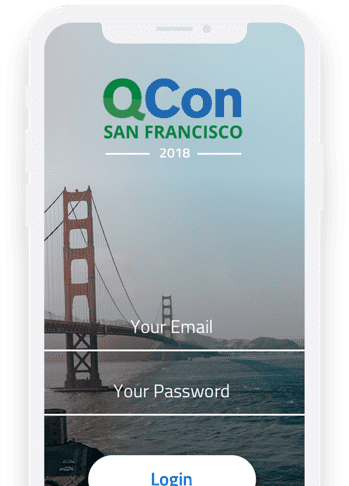Training: [SOLD OUT] Event-Oriented Domain-Driven Design
Using events to deliver core business value
This intensive, two-day, hands-on workshop teaches you DDD within an explicitly event-oriented microservices business domain. You will learn both strategic and tactical design. This workshop is specially designed for mid-level and senior software developers and architects who are interested in applying event-driven and microservices architectures using DDD. This is a hands-on workshop. Students are strongly encouraged to engage in workshop exercises and write source code that includes implementing multiple interacting Microservices that are event-driven and that use DDD strategic and tactical design.
This hands-on, code-prolific, DDD workshop teaches you the essentials of how to implement using the Domain-Driven Design approach. Students first receive an overview of DDD’s strategic and tactical design, including ways to develop a Ubiquitous Language within a Bounded Context, using both Event Storming and Specification by Example.
Following this, teams of students use these tools to reach a shared understanding of a Core Domain and Subdomains. Each team presents their “big picture” and “design level” direction and receive helpful feedback before the implementation begins. This step leads to a succession of strategic and tactical design learning and implementation steps with either Java or C#. Implementations may use Event Sourcing and traditional domain model persistence.
Takeaways:
- Essential DDD, with strategic and tactical design, including developing a Ubiquitous Language in a Bounded Context
- Bounded Contexts, Core Domain, Subdomains, and Context Mapping
- Domain Events and Aggregates
- Project acceleration and management tools
- Learn the basics of Event Storming using “big picture” and “design level” modeling
- Apply your storming results to actual implementations using Aggregates and Domain Events
- Use Domain Events to integrate with multiple Bounded Contexts
- The tradeoffs of using traditional domain model persistence and Event Sourcing
Outline
- Domains, Subdomains, and Bounded Contexts
Grasp the core concepts of DDD strategic modeling, and put them to use. Learn to vigorously gather core concepts and separate irrelevant ones. Learn why strategic design is so essential. Develop the ability to determine when your domain models are composed correctly and when they required more rigorous design.
- Context mapping
Learn how to integrate with other subsystems using DDD and straightforward design techniques. Context Maps are not just drawings. Use them for cross-team communications, project thinking, learning, planning, and as an integration tool.
- Architectures that support DDD
See how the Microservices Architecture, Ports and Adapters Architecture, along with an Event-Driven Architecture, can be used to support your DDD projects. Coupled with DDD, these architecture styles and patterns will support your microservices efforts.
- Domain events and event storming
Learn to use Domain Events and Event Storming for both “big picture” systems designs and “detail level” tactical designs. Exercises will lead to using and Event-Driven Architecture in Day-2 implementations.
- Aggregates
Demystify effective aggregate designs with the use of a set of simple rules. Learn how to design object clusters for correct transactional consistency, performance, and high scalability.
- Acceleration and management tools
Every project stakeholder knows the urgency of staying on task and on time. What techniques and tools can be used to accelerate your DDD effort, provide project estimates, time box domain modeling efforts, collaborate with domain experts, and how much time will that require? The answers are given and reenforced through practical guidelines.
Other Workshops:
Tracks
Monday, 5 November
-
Microservices / Serverless Patterns & Practices
Evolving, observing, persisting, and building modern microservices
-
Practices of DevOps & Lean Thinking
Practical approaches using DevOps & Lean Thinking
-
JavaScript & Web Tech
Beyond JavaScript in the Browser. Exploring WebAssembly, Electron, & Modern Frameworks
-
Modern CS in the Real World
Thoughts pushing software forward, including consensus, CRDT's, formal methods, & probabilistic programming
-
Modern Operating Systems
Applied, practical, & real-world deep-dive into industry adoption of OS, containers and virtualization, including Linux on Windows, LinuxKit, and Unikernels
-
Optimizing You: Human Skills for Individuals
Better teams start with a better self. Learn practical skills for IC
Tuesday, 6 November
-
Architectures You've Always Wondered About
Next-gen architectures from the most admired companies in software, such as Netflix, Google, Facebook, Twitter, & more
-
21st Century Languages
Lessons learned from languages like Rust, Go-lang, Swift, Kotlin, and more.
-
Emerging Trends in Data Engineering
Showcasing DataEng tech and highlighting the strengths of each in real-world applications.
-
Bare Knuckle Performance
Killing latency and getting the most out of your hardware
-
Socially Conscious Software
Building socially responsible software that protects users privacy & safety
-
Delivering on the Promise of Containers
Runtime containers, libraries, and services that power microservices
Wednesday, 7 November
-
Applied AI & Machine Learning
Applied machine learning lessons for SWEs, including tech around TensorFlow, TPUs, Keras, PyTorch, & more
-
Production Readiness: Building Resilient Systems
More than just building software, building deployable production ready software
-
Developer Experience: Level up your Engineering Effectiveness
Improving the end to end developer experience - design, dev, test, deploy, operate/understand.
-
Security: Lessons Attacking & Defending
Security from the defender's AND the attacker's point of view
-
Future of Human Computer Interaction
IoT, voice, mobile: Interfaces pushing the boundary of what we consider to be the interface
-
Enterprise Languages
Workhorse languages found in modern enterprises. Expect Java, .NET, & Node in this track




